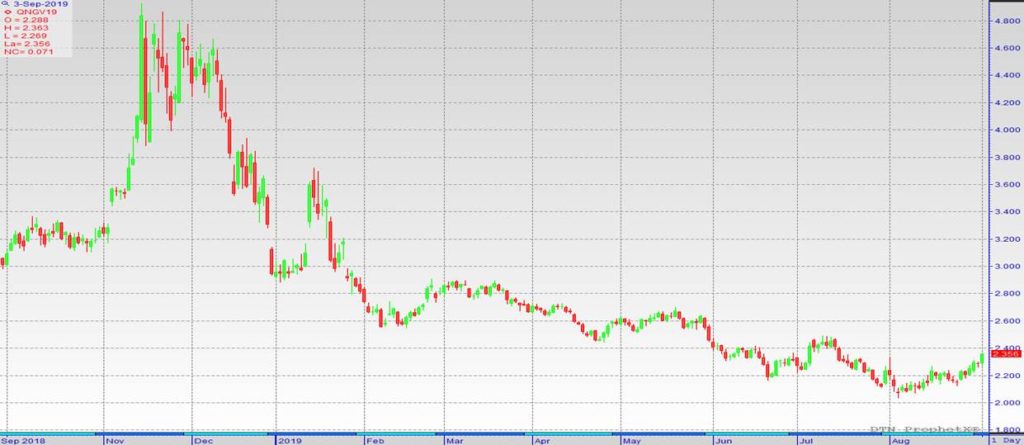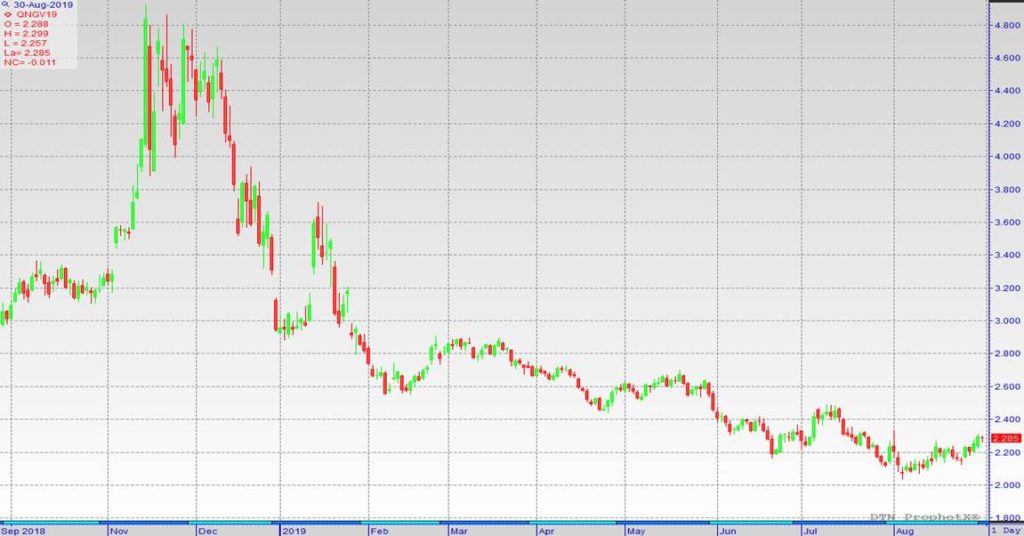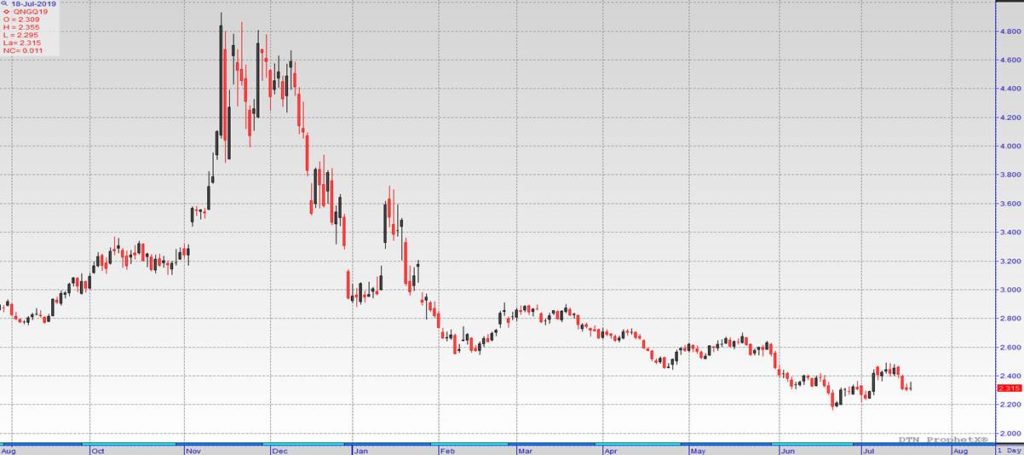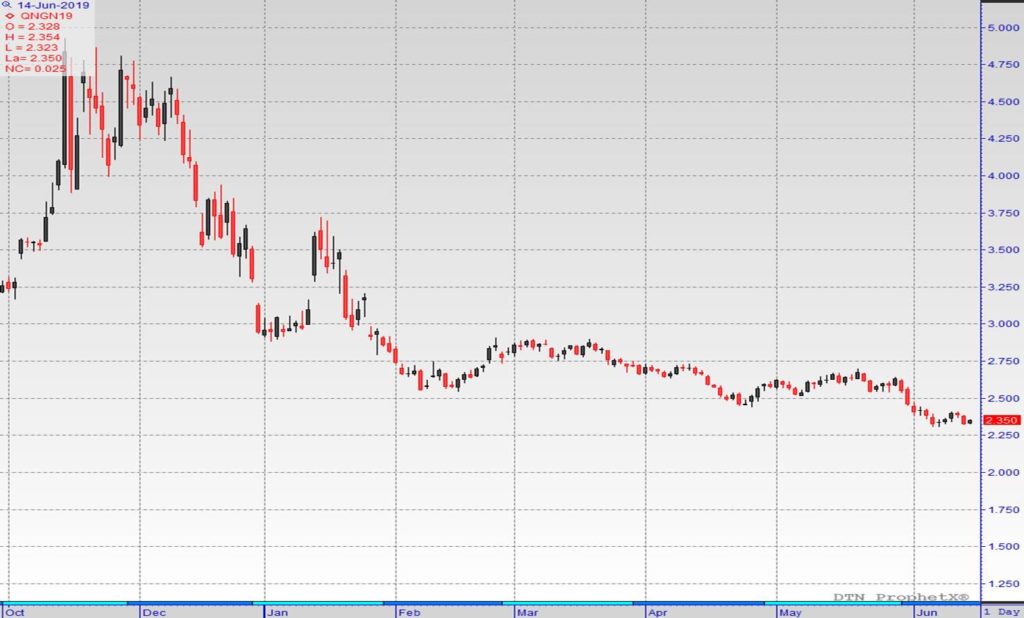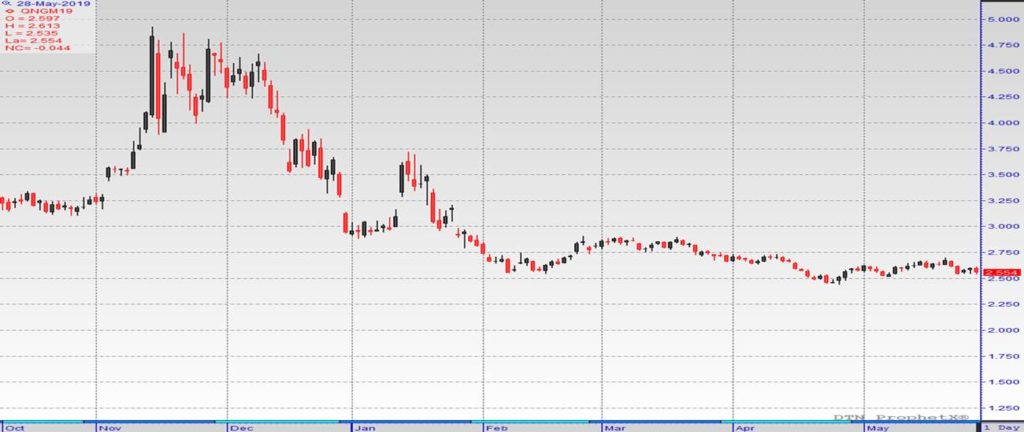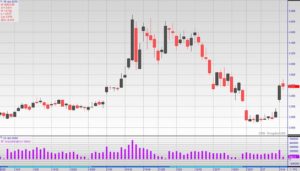Natural Gas Price Fundamental Daily Forecast – Seasonal Buying Continues to Lift Prices
Natural gas futures are trading higher on Wednesday up 4.7 cents at $2.405..
Short-covering tied to seasonal buying and the expiration of the September futures contract last week continue to drive the price action.
Spot market strength and the weather are also influencing the price action.
Demand Concerns Lifted as Hurricane Dorian Moves Away from Florida
Hurricane Dorian is also having an impact on prices, but not what you probably think. Some analysts have been pushing the hurricane story as the reason for the recent strength,
but they haven’t been watching the traditional fundamentals and the usual impact of a Florida hurricane on prices.
Florida hurricanes that affect the East Coast usually drive natural gas prices lower because they drive down demand.
Hurricanes in the Gulf of Mexico near Louisiana and Texas are usually bullish for natural gas prices because they usually lead to production disruptions.
For several days, natural gas traders were worried about demand, but once the forecasts called for the Hurricane Dorian to move north, along the East Coast and away from Florida,
the demand concerns were lifted, allowing prices to rise. Furthermore, at no time were the natural gas platforms in the Gulf of Mexico threatened.
Massive Short-Covering
We said last week that shorts held record positions when the September futures contract expired last week.
We also said that they would have to decide whether to rollover into the October contract in anticipation of lower prices,
or cover their positions in anticipation of the start of the fall shoulder season and in preparation for winter demand.
Based on the price action, it looks as if they have decided to cover their positions. This is another factor driving prices higher.
Other Weather Related News
According to Bespoke Weather Services, this week’s rally comes “thanks mostly to strong cash prices, but with some support from a weather pattern that finally move hotter,
with heat expanding out of the West and into parts of the central and eastern United States.”
With Hurricane Dorian approaching Georgia, Kinder Morgan Inc. has temporarily shuttered its Elba Island liquefied natural gas (LNG) terminal on the Georgia coast.
However, this is having no impact on prices because of the possibility of lower demand when the electrical power goes out.


